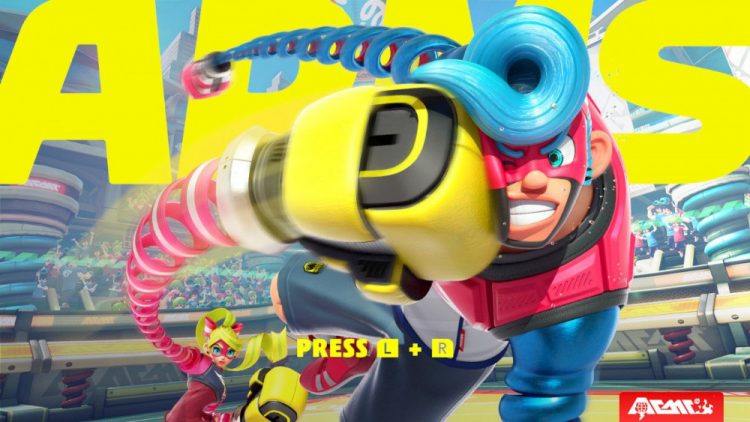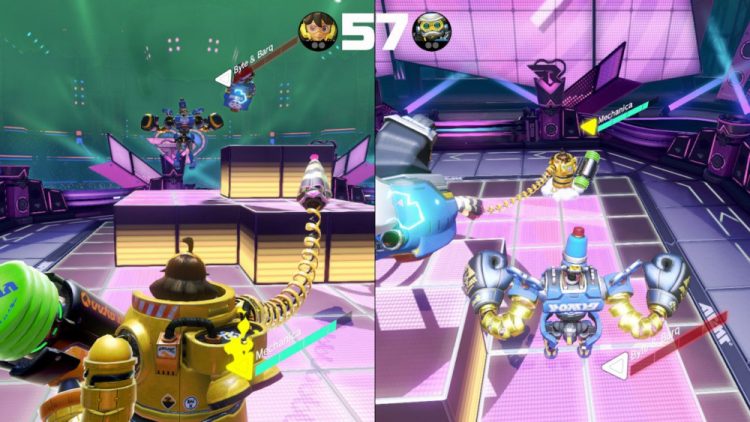If you’ve listened to the Nintendo Entertainment Podcast, you know I’ve had a bit of a love affair with ARMS from the minute it was revealed at the Switch event back in January. After playing the game for a couple of weeks, I feel confident saying my enthusiasm wasn’t misplaced. ARMS is a lot of fun, especially when playing with motion controls. It feels strange typing the terms “fun” and “motion controls” in the same sentence, but I actually really enjoy them.
This piece isn’t about my appreciation for them, however. It’s about motion gaming and the role ARMS will play in determining the course of its future.
When the Nintendo Switch was revealed it promised to change the way people played video games in several key ways. The Switch would offer home console experiences on the go, feature several control schemes to enjoy games with, and revitalize the idea of motion controls with the Joy-Cons’ infrared sensors.
So far, the Switch has proven itself to be a very successful marriage of home console and handheld experiences. The Legend of Zelda: Breath of the Wild proves the device can play massive games previously only available on home consoles, while Mario Kart 8 Deluxe fulfilled the promise of accessible local multiplayer wherever you go thanks to several controller options.
ARMS sets out to be the first game that delivers on that final promise. Motion controls were included in both Breath of the Wild and Mario Kart 8 Deluxe, but neither game was built around them. In fact, both games were far better experienced with the Pro-Controller.
While that hardly renders the Joy-Cons irrelevant, it does make you question whether or not Nintendo was smart to pour resources into infrared sensors and HD rumble rather than improving the console’s battery-life or processing power. Both of those games’ success has nothing to do with the additional features packed into the Joy-Cons. With ARMS, Nintendo finally has a chance to sway the court of public opinion back towards enjoying motion gaming and prove that the investment was worth it.
The very idea of ARMS was clearly born from the idea of the Joy-Cons and was meant to showcase their motion features. Go back and watch its reveal again at the Switch event for evidence. Nintendo placed it right behind 1+2 Switch, and used the same advertising style. The 1+2 Switch video starts at 17:50 and ARMS follows it immediately.
After playing the game it became even more obvious that Nintendo wants people to play with motion controls on. Each arm is controlled by one Joy-Con, and half the fun comes from throwing punches, twisting them, and trying to knock out your opponent like a boxer. It’s hard to imagine this game being released on a system like the GameCube or even the Wii because its gameplay is built around each player using two separate controllers for two separate arms.
https://www.youtube.com/watch?v=Ntzz8O7SpWs
1+2 Switch set out to prove that the Joy-Cons could take motion controls to the next level as well. It ultimately failed miserably, but not because the controls themselves were bad. The games found in the package were just uninteresting and uninspired. ARMS is anything but that. It’s nails the Nintendo charm, from its visuals to its characters, and exudes creativity. If ARMS fails, it could and should be the death knell for games based around motion controls.
Of course, ARMS could succeed wildly commercially regardless. But the thing to watch out for is how reviewers and fans react to the Joy-Cons vs Pro-Controller debate when playing the game. If a game like ARMS, which owes its very existence to the idea of motion controls, is seen as more enjoyable with the Pro-Controller that should force Nintendo to move on.

On the flip-side, and if early indicators are any sign, the success of ARMS’s motion controls could dramatically change the Switch’s future. The people at Nintendo bleed creativity, and the games they could come up with using this technology could be every bit as compelling as ARMS. ARMS also has esports potential, and having players boxing on stage at a tournament like EVO would make the validity of motion gaming impossible to debate.
When ARMS releases, I’m not expecting everyone to fawn over its motion controls. There will always be those (including yours truly) who generally prefer traditional controllers over motion inputs. Still, if ARMS can give people like me a reason to believe in motion controls, the Switch could offer motion gameplay experiences that no other console can. That selling point could play a big role in reshaping this console generation as well as the ones to come.



